Directly after the Map Gallery, there’s a small doorway leading to a staircase that ends at the Sistine Chapel. This was by far the most crowded area of the Vatican complex because the entryway is very small (so a special warning to those of you who are a little claustrophobic--you are going to need to do some deep breathing here).
When we finally reached the entrance to the Sistine Chapel, there was a security guard repeatedly yelling “No Photography and No Talking” over and over and over again. Not that he did anything to stop the people doing those things.
We had been warned about both rules so it was no surprise to us. Although a random side note about the no photography rule, originally, I thought it was because of the potential for damage but as it turns out it’s because the Nippon Television Network Corporation owns the filming rights to the Chapel. In exchange for exclusive filming rights, Nippon provided over $4.2 million in restoration funding for the Sistine Chapel. So with that I’m going to speak from source pictures I found online. In the end, they are probably better than anything I could take because we were in a wall-to-wall crowd.
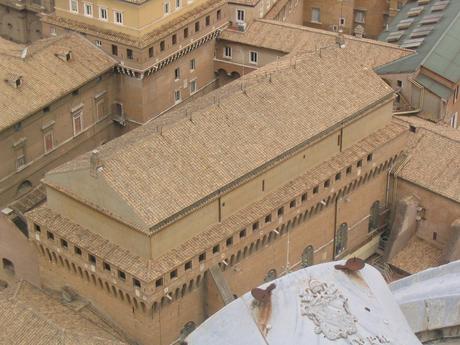
The present Sistine Chapel was built between 1473 and 1481 by Giocannio de Dolci. The exterior is very unassuming built mainly from tan bricks.
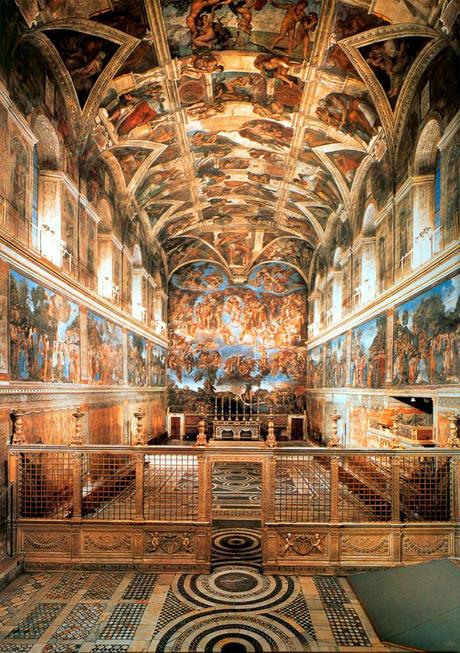
The ornate decorating of the interior, however, more than makes up for Sistine Chapel’s lack of curb appeal. The entire chapel is covered from floor to ceiling in world famous frescoes painted by some of the most renowned Renaissance painters ever known, including Michelangelo, Botticelli, Perugino and Pinturicchio.
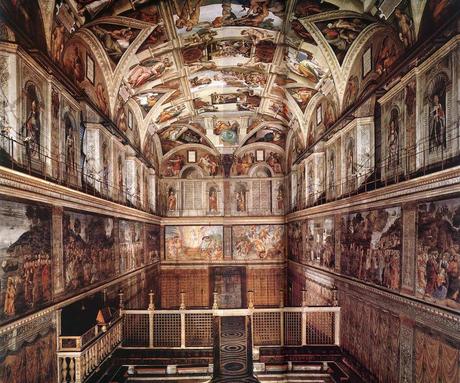
The bottom of the walls contains an area for Raphael’s tapestries to be hung (you can see those in the Vatican Museum post). The middle level displays frescoes painted by a variety of Renaissance painters depicting the Life of Christ on the right and the Life of Moses on the left. The upper wall contains frescoes of famous Popes. The middle and upper walls were painted between 1481 and 1482.
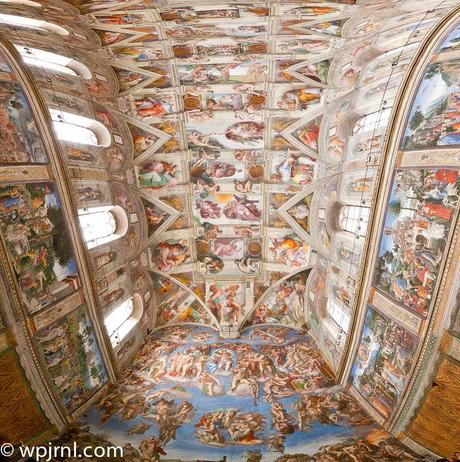
The most famous of all of the interior decorations are certainly Michelangelo’s depiction of creation on the Sistine Chapel’s ceiling and the Last Judgment on the altar wall.
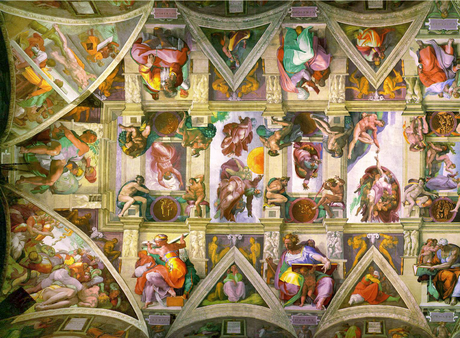
To give you a better idea of how the biblical stories are displayed on the ceiling, here is the best typographical layout I’ve found:
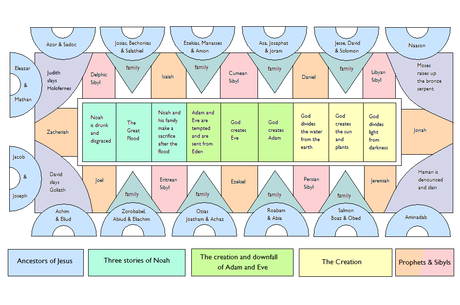
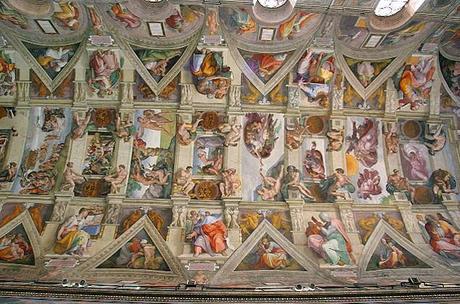
Michelangelo managed to convince the Pope to let him paint whatever he wanted. In the end, Michelangelo took four years to paint over 300 figures.

Rumor has it that Michelangelo laid on his back to paint the ceiling but that’s actually not true. He stood and arched his head up towards the ceiling, causing him great discomfort and permanently damaging his eyesight.
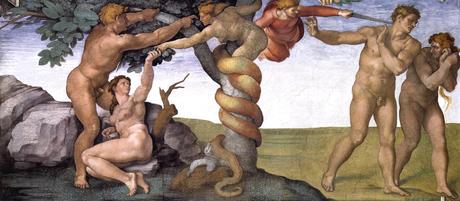 The frescoes focus on the theme of humanity’s downfall into disgrace and the eventual Salvation of humans through Jesus Christ. The largest portion of the ceiling is devoted to 9 stories from the book of Genesis, moving from the creation of the Earth, to Adam and Eve and ending with the story of Noah.
The frescoes focus on the theme of humanity’s downfall into disgrace and the eventual Salvation of humans through Jesus Christ. The largest portion of the ceiling is devoted to 9 stories from the book of Genesis, moving from the creation of the Earth, to Adam and Eve and ending with the story of Noah. 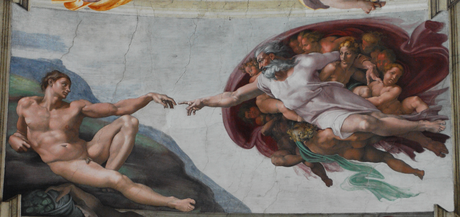
Probably the most famous image from the ceiling frescoes is God reaching out to Adam.
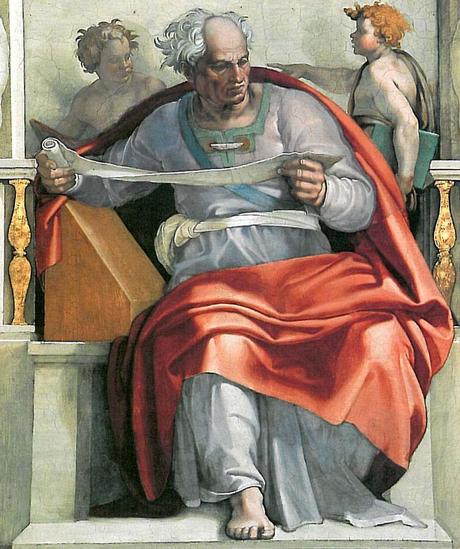 Surrounding these 9 stories are depictions of prophets and sibyls, including Daniel, Joel and Jonah to name a few.
Surrounding these 9 stories are depictions of prophets and sibyls, including Daniel, Joel and Jonah to name a few. 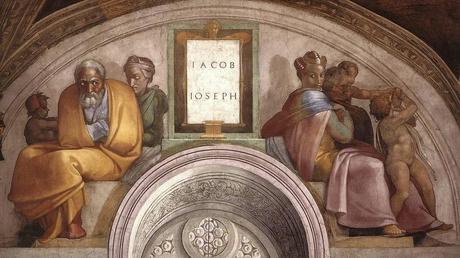
Beyond the prophets are depictions of the ancestors of Jesus like Jacob and Joseph.
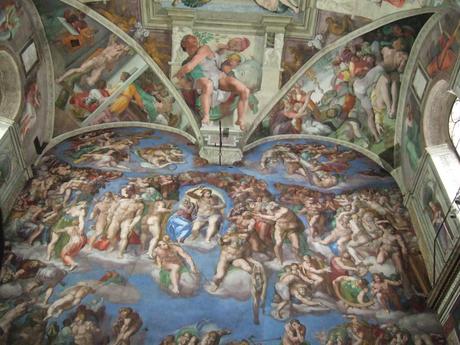
Beyond the ceiling, Michelangelo was also responsible for the altar wall, which he turned into the Last Judgment. He painted it over 20 years after completing the ceiling, from 1535-1541.
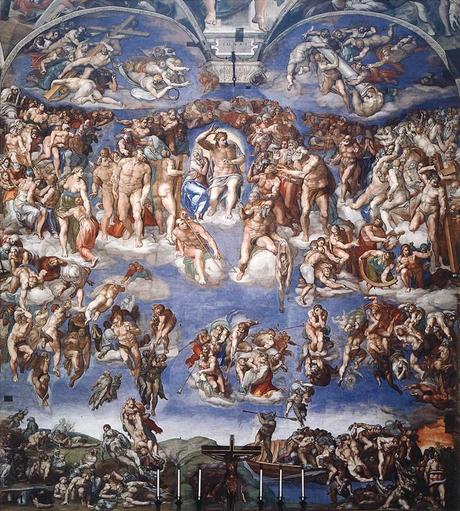
The Last Judgment portrays the Second Coming of Christ where Christ serves as the Judge who condemns the damned to hell with his left hand and welcomes the saved to heaven with his right.
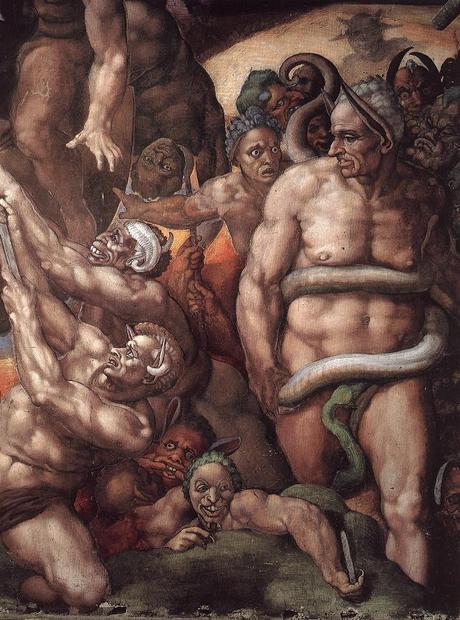
One of the most infamous stories of this fresco surrounds the men seen above. This character is representative of Minos, the Judge of Souls, who has been banished to hell with the ears of the jackass. Minos’s genitalia is covered by a coiled snake, which also happens to be biting him in the genitalia. Minos actually is a portrait of the papal Master of Ceremonies (during the time of Michelangelo’s creation of the Last Judgment), Biagio de Cesena, who repeatedly complained about the nudity in the fresco to the Pope, stating that nude figures were more appropriate for a bathhouse or house of ill-fame.
Michelangelo obviously did not take well to the criticism and decided to pay Biagio back by memorialize him in hell. When Biagio complained about his portrait to the Pope, the Pope replied that he had no jurisdiction in hell.Even though Michelangelo got the last laugh with Biagio During the restoration of the Sistine Chapel in the 1990s, about half of these cover-ups were removed.
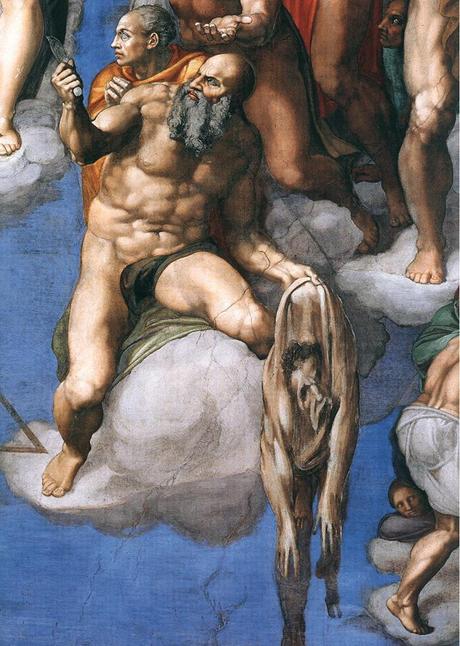
Michelangelo also strategically placed his own portrait twice in the Last Judgment. One incidence is seen above, where Michelangelo painted his face onto the flayed skin.
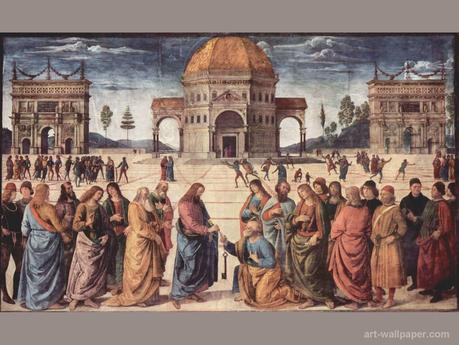
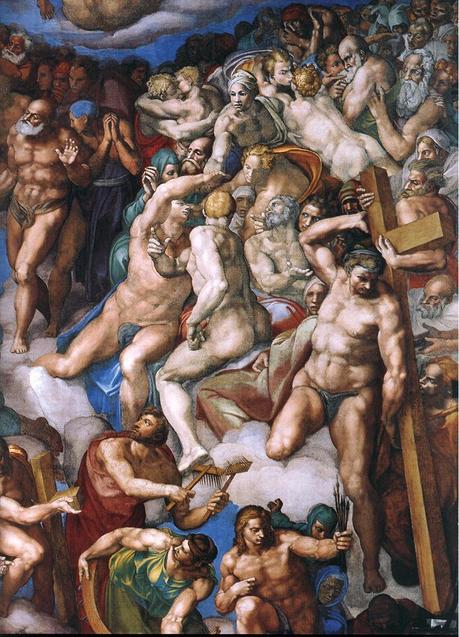 While the Sistine Chapel is covered in other frescoes, Michelangelo’s clearly blow the others out of the water. You can see the comparison above. To the left is a section from Michelangelo’s Last Judgment. To the right is probably the most famous non-Michelangelo fresco painted by Perugino Pietro. It symbolizes Christ giving the keys to heaven to Peter.
While the Sistine Chapel is covered in other frescoes, Michelangelo’s clearly blow the others out of the water. You can see the comparison above. To the left is a section from Michelangelo’s Last Judgment. To the right is probably the most famous non-Michelangelo fresco painted by Perugino Pietro. It symbolizes Christ giving the keys to heaven to Peter. The definition, vibrancy and details of Michelangelo’s frescoes are clearly unparalleled.
Even though the frescoes are over 500 years old, their vibrancy is still awe-inspiring (surely helped by the multimillion dollar restoration undertaken in the 1990s). Although some have criticized the restoration for removing some of the subtle highlights and shadows of the frescoes, they are still breathtaking.
The only downside to the Sistine Chapel is the manor in which you have to experience it. It’s truly difficult to soak in its wonder while being elbowed and pushed by the overwhelming crowd. There literally was no room to breath, much less move.
We opted to move away from the large crowd in the center of the Chapel to the back of the Chapel, where there are benches lining the wall. From there, it was much easier to gaze at the frescoes and we had a direct view of the Last Judgment.
From the benches, I could sit and admire the painstakingly detailed work, picking up on all the subtle shadows and symbolism. If you decide to go to the Vatican, I would suggest picking the least crowded day (usually Tuesday or Thursday). You will be able to appreciate the beauty so much more without the murmur of the crowd looming over you.
Even though the Chapel was filled to the brim, it still was one of the most amazing experiences of my life. I can vividly remember sitting on a bench staring at the frescoes with my brand new husband holding my hand completely dumbfounded by the beauty that surrounded me. It’s a shame that we Americans don’t have the opportunity to explore these rare treasures on an everyday basis. I think we would have a deeper appreciation for the World and Humanity if we could grow up around such inspirational works.
With that our tour of the Sistine Chapel was over and we walked over to St. Peter’s Basilica, stationed next door. And that is where we will pick up tomorrow.
What You've Missed:MonacoPisa Florence
Ancient RomeVatican Museums
Up Next: St. Peter's Basilica
